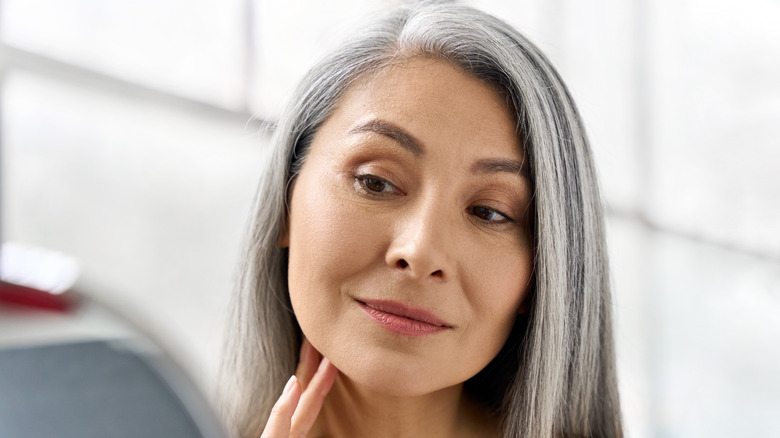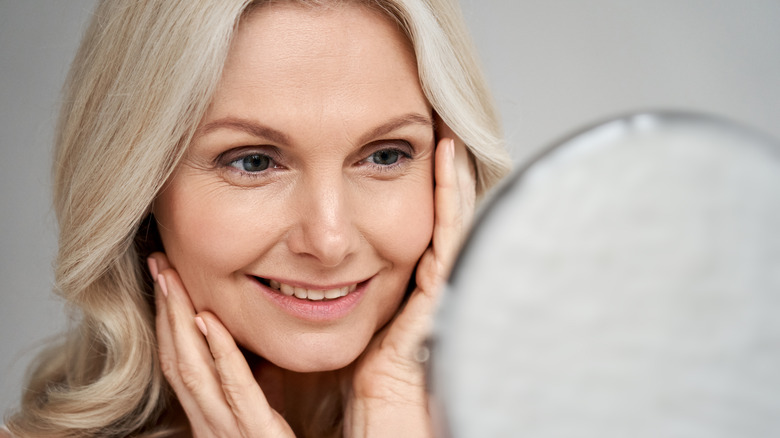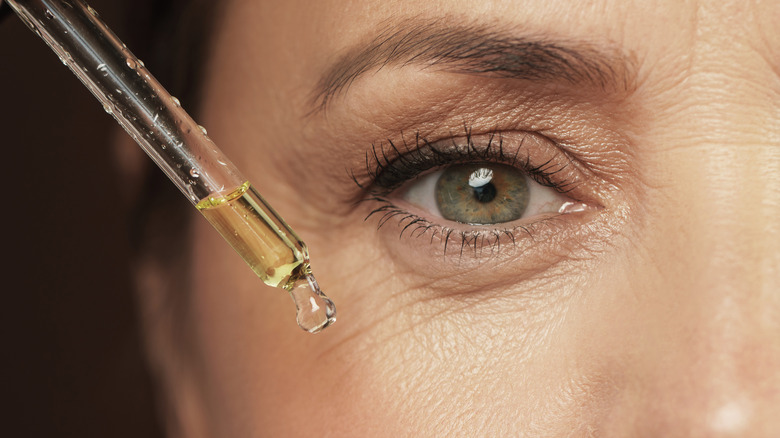What Are Crow's Feet Around Your Eyes?
As people age, many things change, one being skin. It begins to sag and is covered in fine lines and wrinkles. While all of this is seen on the surface, it really happens in the layers below. Medline Plus explains that the skin can be divided into three parts. The epidermis is the section we see every day; it holds your skin cells and pigment. Then there's the dermis which is the middle part of your skin. This is where your oil glands, hair follicles, blood vessels, and nerves live. Below that part is your subcutaneous layer, which has your sweat glands, fat, and more blood vessels and hair follicles.
The connective tissue is the glue that keeps your skin's layers together. It's made of collagen fibers to give your skin the strength to bounce back into place. The older someone gets, the less collagen their body produces. Without this crucial component, the skin will take longer to heal, begin to sag, and create wrinkles. Crow's feet are just one of the types of wrinkles that appear on the face as people mature.
Crow's feet or laugh lines
The wrinkles that people call crow's feet go by many names. They got this one because its shape resembles a bird's foot. However, they're also called laugh lines because they happen when people smile. Their real name is lateral canthal lines; they occur on the eyes' outer corners as the muscle contracts, according to Cleveland Clinic. Crow's feet aren't exclusive to one expression. These wrinkles appear on the face whenever someone squints their eyes.
People have an issue with crow's feet because as they age, the wrinkles stay on their faces instead of disappearing when they change their expression. Laugh lines will naturally wrinkle the skin when people reach their 30s or 40s. However, they can occur even earlier because of genetics, the environment, and nutrition. Exposure to the sun is one of the main factors for the early development of crow's feet. To keep your face youthful and free of fine lines or wrinkles, you must pay attention to your skin's health before it's too late to reverse the damage.
Prevention is key
Prevention is what can save your face from crow's feet. It's easier to maintain a healthy complexion instead of spending a fortune on procedures to remove wrinkles. Many people believe that crow's feet are a sign of a well-lived life, so you only need to worry about preventing these wrinkles from developing prematurely. If you've noticed that you squint a lot, consider getting your eyes checked and wearing sunglasses. FaceClinic London also recommends filling your diet with at least six glasses of water and antioxidants like vitamins A, E, and C. This is because they will help your skin cells repair themselves.
If you already see early signs of crow's feet, there are products you can add to your skincare routine to treat them. Other than wearing SPF every day, using retinol is a great way to apply vitamin A topically. This is the perfect product to use because it increases skin cell turnover, one process that slows the more a person ages. Along with treating any wrinkles you may already have, it will help prevent any new ones from forming.


